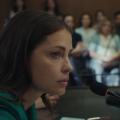The recent brutal arrest of a Black college student in Florida serves as a stark reminder of the importance of recording police interactions. A video, seemingly captured by a bystander, shows officers violently subduing the student, sparking outrage and reigniting the crucial conversation surrounding police accountability. The footage, which quickly went viral on social media, depicts a disturbing scene of excessive force, leaving many questioning the officers’ actions and raising concerns about racial bias in policing.
The graphic nature of the video has understandably caused significant public outcry. Many are demanding a thorough investigation into the incident and calling for appropriate disciplinary action against the officers involved. The video’s clarity leaves little room for doubt about the severity of the situation, showcasing the undeniable impact of visual evidence in holding law enforcement accountable. Without the recording, this incident might have easily been dismissed or downplayed, leaving the student without justice.
This case highlights the growing necessity for citizens to document their interactions with law enforcement, particularly in situations where there’s a potential for abuse. Dashcams, cell phone cameras, and even body cameras worn by individuals can provide crucial evidence in cases of misconduct. The ability to record interactions provides a crucial layer of transparency and helps ensure that accountability mechanisms are effective. While privacy concerns must be considered, the protection afforded by documented evidence in the face of potential police brutality is invaluable.
The debate surrounding police reform continues to rage, and incidents like this only serve to amplify the urgency of the conversation. The widespread dissemination of the video underscores the power of citizen journalism and the role technology plays in exposing injustice. As we move forward, fostering trust and accountability within law enforcement requires a multifaceted approach – and access to visual evidence is undeniably a critical component.
This event serves as a powerful call to action. Consider equipping yourself with the means to record interactions with law enforcement, and encourage others to do the same. The ability to document such encounters could be the difference between justice served and injustice perpetuated.










